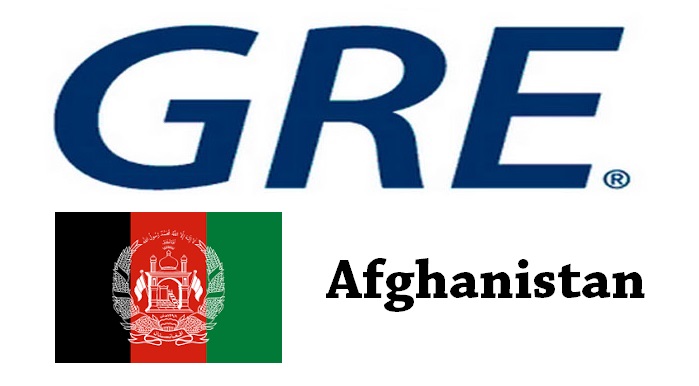GRE Testing Locations
Decided to take GRE exam? Now it is time to determine where to take the test. This site provides a full list of GRE testing centers in Afghanistan, among which, you can choose one that is nearest to you. Good news is that the following GRE test locations in Afghanistan offer both GRE general test and the GRE subject tests.

- American University of Afghanistan – STN14189A
Main Darul Aman Road Sanatoriam District #6, C Building, Room C3, Kabul
Afghanistan
Computer Based Test
GRE Test Dates
There are two types of test format offered by the test maker – ETS: Computer-delivered and Paper-delivered GRE general tests. For computer based test format, the GRE General Test is offered year-round on a continuous basis, and available for registration on a first-come, first-served basis. For paper based general test, testing is available three times per year. The following test dates apply:
| Test Dates for Paper Based | Deadlines for Registration | Scores Available |
|---|---|---|
| November 09, 2019 | October 4, 2019 | December 20, 2019 |
| February 1, 2020 | December 27, 2019 | March 13, 2020 |
GRE Subject Tests in Afghanistan
The GRE Subject Tests are available on paper based only. In all GRE test centers throughout the world (both inside and outside United States), the exam is available three times a year. The three test dates are:
- April
- September
- October

More about Afghanistan
Population
Due to the waves of refugees in recent decades, information on the population is based on estimates and is also subject to large fluctuations. The population of the multi-ethnic state consists of around 55 (other data: over 200) ethnic groups of different sizes. The largest and most important ethnic group with around 40% are the Pashtuns (also Afghans or Pathans), who are divided into numerous tribal associations and are particularly at home in the south and southeast on the border with Pakistan. Their settlement area was divided by the Durand Line in 1893 and today half belongs to Pakistan. The Tajiks (around 25%) settle particularly in the north and northeast of the country, the Hazara (about 10%) live in the Hindu Kush. Turkic-speaking groups are Uzbeks (around 10%) and Turkmen. There are also Aimak, Baluch, Nuristani, Paschai, Kirghiz, and Kisilbasch and others.
Around 60% of the population are younger than 25 years and 85% are younger than 40 years. Child mortality is among the highest and life expectancy among the lowest in the world. Most of the population live in large family groups in villages and hamlets. The nomads camp in clan associations in their summer grazing areas in central and northern Afghanistan and in winter in western, southern and northern Afghanistan and in the Pakistani industrial lowlands. The population density averages 54 residents / km 2. The proportion of the urban population is around 28% – other estimates assume a significantly higher degree of urbanization as a result of the strong rural exodus. The biggest cities are Kabul , Kandahar , Mazar-e Sharif , Herat and Jalalabad. Because of the acts of war, up to 8 million people were at times on the run, mainly to neighboring countries. At the end of 2018, around 2.7 million Afghans were living as refugees abroad, mostly in Pakistan and Iran; 2.1 million were internally displaced.
The biggest cities in Afghanistan
| Largest cities (inh., As of 2019) | |
| Kabul | 4,273,200 |
| Herat | 556 200 |
| Kandahar | 506 800 |
| Mazar-e Sharif | 469 200 |
| Jalalabad | 263 300 |
Religion
Islam, to which almost 99% of the population professes, is the state religion. 85–90% of the population are Sunni Muslims (predominantly from the Hanefi school of law). The Hazara, many Tajiks (center Herat) and the Turkic Kisilbasch are Shiites (Imamites); there is also an Ismaili minority in the Pamirs and in the province of Baghlan. Piety and religious practice are strongly influenced by Sufism (especially the brotherhoods of Naqshbandija and Qadirija). The minorities of the Hindus andSikhs almost without exception live in the larger cities (temples in Kabul) of eastern and southern Afghanistan and are descendants of Indian traders who settled in Afghanistan primarily in the 19th century. The Jewish community, which has been in Afghanistan since the 12th century and which had around 40,000 members in the 19th century (centers: Balkh , Herat and Kabul), emigrated completely in the course of the 20th century (1951 lifting of the emigration ban for Jews). The spread of the Christian religion is restricted to foreigners living in Afghanistan and the Christian practice of religion is restricted to private areas.
The political Islamization of the Afghan state began with the victory of the Mujahideen over the communist government (1992); Afghanistan became an Islamic republic for the first time. In 1996–2001, the Taliban set up an »Islamic Emirate« that was extremely restrictive in everyday life and social life; the numerous bans were controlled by a religious police. The 2004 constitution defines Afghanistan as an Islamic republic. The Ministry of Religious Affairs is responsible for state policy on religion.
